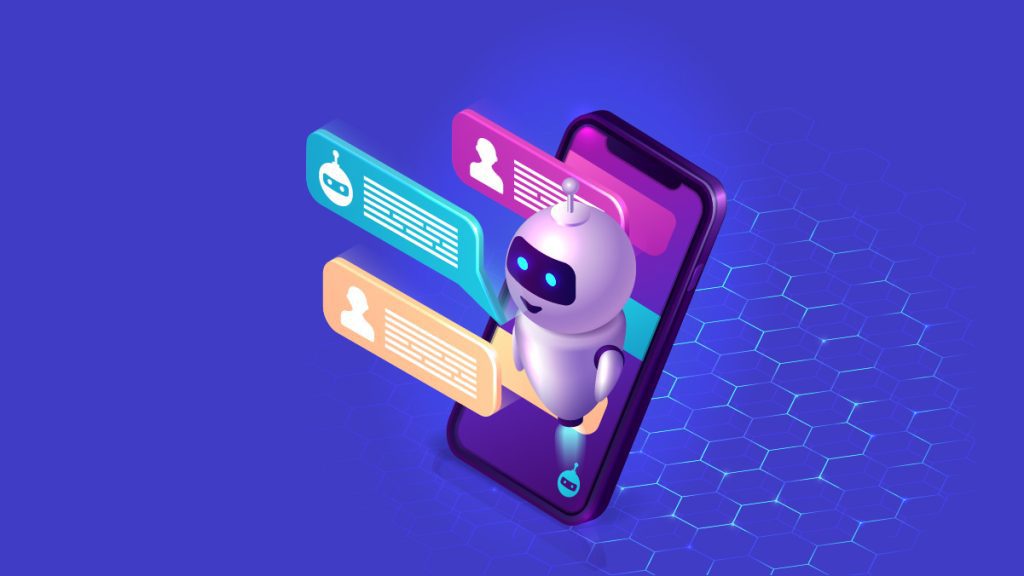
Created by Joseph Weizenbaum in 1966, ELIZA was the first chatbot of its kind. The technology underwent several modifications and adjustments. Modern chatbots are powered by Artificial Intelligence (AI), such as Apple’s Siri, Microsoft’s Cortana, and Samsung’s Bixby. This innovation integrated itself into the daily life of the average man up to the point we see its application in several fields, notably in the higher education sector. Higher ed chatbots might take over the clerical duties in the admission offices of several universities and libraries.
What is a Chatbot?
A chatbot (also known as a chatterbot) is a software application that conducts an online chat conversation via text or text-to-speech instead of providing direct contact with a real person. There are two types of chatterbots: simple and intelligent. Simple chatbots are the more basic version of the two, a rudimentary computer program that answers a simple query with a single-line response. Intelligent chatbots, however, are digital assistants that gather and process information, then learn and evolve to deliver increasing levels of personalization.
How Does a Chatbot Work?
Both types of chatbots perform two essential tasks on the backend:
- Analyzing the request or question asked;
- Framing an answer to the query.
In practice, this process is complex and works the same whether the chatbot is voice- or text-based. The chatbot won’t respond correctly if the algorithm fails to identify the context and extract information from the request.
Assuming the chatbot has interpreted the user’s request correctly, it will provide the most appropriate answer taken from multiple sources:
- A predefined text;
- A text retrieved from a data center that contains different responses;
- A response from an enterprise system.
If more information is required or the request is ambiguous, the algorithm will generate either a follow-up question or a response with a similar question.
Higher Ed Chatbot Benefits
Programmers can adjust AI Chatbots to better be of services in different fields, such as the higher ed chatbot in universities and colleges. This technology offers several benefits.
In General
In general, AI Chatbot exhibits tremendous benefits based on the field of application. Specific AI programs can fill the Customer Concierge Service role that guides customers through inquiry, advisory, purchases, and support. Since bots lack human needs (i.e., sleep, eating, etc.), they can offer 24/7 customer care without the enormous expense. In addition, it provides on-demand, two-way conversations no matter the platform it’s used on (social media, your website, or any other channel).
In Higher Education
For universities and colleges, using the higher ed chatbot offers benefits on two levels. The first pertains to the administration and its staff. Chatbots reduce the manual effort of answering the same questions repeatedly, thus, freeing time and resources to focus on other tasks. Furthermore, chatbots can deploy updates promptly when there are changes in procedures or processes, ensuring the new information is available across all platforms. Thus, communications are improved, and the administrator can quickly provide the staff with information. Chatbots are available 24/7, unlike the admin staff.
But the real benefit is on the second level, among the student body. The higher ed Chatbot efficiently provides students with answers to their valid questions. Students won’t have to wait for administrators’ emails or read lengthy FAQ documents. So, by providing quick and concise explanations, the bot reduces student wait time and improves the overall student experience.
In addition, chatbots allow socially anxious students a degree of relief; students can access the desired information without talking to the advisor in person. The students can also figure out the repercussions of changing majors and its impact on their course load. The higher ed chatbot can also recommend courses. An AI chatbot is not limited to its pool of information; it can communicate with other AI applications to provide better results. Additionally, this innovation gives the student better access to information hubs such as libraries. It can answer questions pertaining to assignments or help you find a specific book, or even suggest helpful books for research.
Ultimately, this addition to universities and colleges tailors the experience to each user, helping institutions improve their customer service while meeting the need of both staff and students. Its implementation, however, would be expensive, especially since it requires maintenance to keep the information up-to-date.
Final Thoughts
Doing all the work alone is admirable. However, delegating specific tasks to automation plays into the department’s strength, especially in university and college administrations. Higher ed chatbot lightens the load of the admin staff, provides students with all information needed, and polishes the institutions’ customer service. For better or for worse, technology is going to keep advancing. While beneficial, its efficient integration in every domain might come at the expense of other things if not done tactfully and strategically. Applying AI to relieve the stress of administrative personnel seems the most sensible thing to do.
Inside Telecom provides you with an extensive list of content covering all aspects of the tech industry. Keep an eye on our Intelligent Tech sections to stay informed and up-to-date with our daily articles.